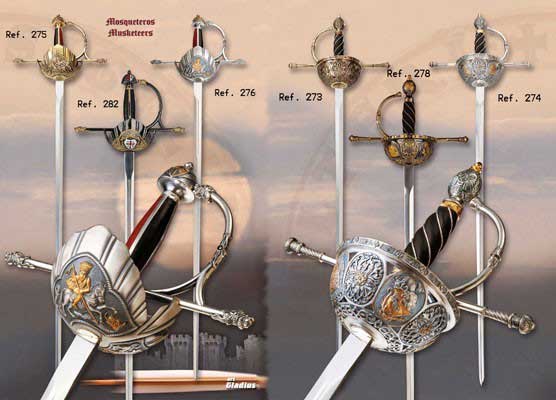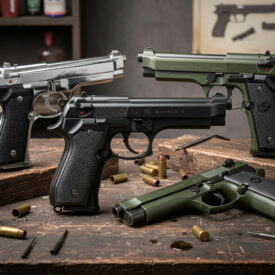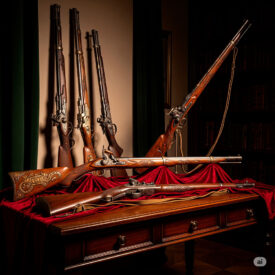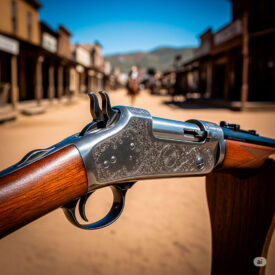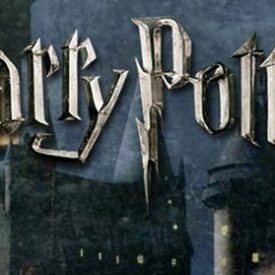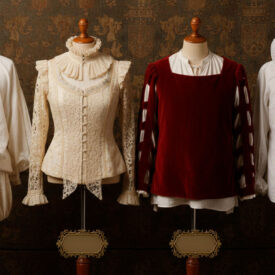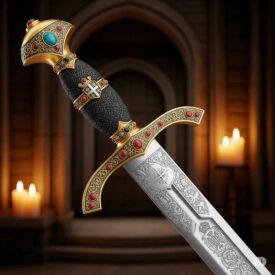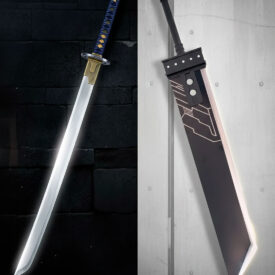A sword that tells a life story: why the “Lope de Vega sword” continues to fascinate
What makes a sword become a secondary character in a writer’s legend? The Lope de Vega sword is not just an object: it is a symbol that unites the pen with action, ingenuity with honor. This article explores that connection from history, weapon typology, the chronology of events that reinforce the author’s image as a man of arms, and the relevance of the cinematic replica forged in Toledo.
Essential chronology: milestones that bring Lope de Vega closer to the sword
The chronology helps to understand why Lope’s figure appears so many times alongside the sword in modern representations. Below are the key moments, with notes that contextualize the relationship between his biography and the iconography of the sword.
- 1562 Félix Lope de Vega Carpio is born in Madrid; his childhood and youth take place in an urban context that would later feed his comedies of intrigue.
- 1580s Active youth: episodes of travel, romantic confrontations, and social tensions are documented, forming part of the imaginary of the man of action.
- 1588 Attributed participation in the Armada enterprise; recent research points to his connection with the expedition from Lisbon, a fact that reinforces Lope’s image as a direct witness to the military adventure of his time.
- Late 1580s–1590s Literary consolidation: Lope becomes a prolific author of comedies, many of them with scenes of honor and confrontation typical of the comedia de capa y espada.
- 17th Century His work and myth begin to project Lope as a hybrid figure: playwright, lover, soldier, and man of the world.
The sword in the context of the Golden Age: from tool to dramatic symbol
In the theater of the Golden Age, the sword is not an ornamental accessory. It is a trigger for conflict: duels, demands of honor, nocturnal vigils, and romantic entanglements. Lope de Vega contributed a dramatic structure that turned the sword into a recurring narrative element. The comedia de capa y espada consolidated a repertoire of situations where the blade determines the rhythm of the conflict and honor guides the action.
The sword functions on three levels: literal (weapon for combat), symbolic (emblem of honor), and narrative (engine of scenes: chases, duels, threats). This triple function explains why Lope’s image, both in historiography and modern fiction, appears accompanied by weapons and by characters carrying cloak and sword.
Typology: what kind of sword is the “Lope de Vega sword”?
When speaking of the sword associated with Lope, rapier swords and Renaissance cup-hilts are usually mentioned. These pieces combine elegance and effectiveness. Their most recognizable features are:
- Crossguard: long, slender quillons that favor balance and thrust.
- Hilt: cup, shell, or loop, designed to protect the hand in fast combats.
- Blade: long, narrow, and designed for precise thrusts in urban settings or duels.
The replica used in film and theater productions is usually manufactured in Toledo, a place with an artisan tradition that adds authenticity to the piece. The combination of Renaissance aesthetics and functionality makes these swords desired objects for reenactors and historians.
Comparison of relevant sword types
| Type | Blade length (approx.) | Era | Tactical use |
|---|---|---|---|
| Hispaniensis | 60–68 cm | 3rd–1st Centuries BC | Versatile: powerful cuts and thrusts in closed formations. |
| Rapier (ropera) | 85–110 cm | Renaissance 16th–17th | Focused on thrusting in urban environments and individual duels. |
| Cup-hilt sword (cazoleta) | 80–100 cm | Renaissance 16th | High hand protection and maneuverability in close combat. |
- Rapier
-
- Blade length: 85–110 cm
- Era: Renaissance 16th–17th
- Tactical use: Thrusting and urban maneuverability.
The sword in Lope’s image: from document to representation
Modern representations—plays, films, and comics—combine biographical data with dramatic license. In many recreations, Lope appears as both an author and a man of action: a playwright who does not shy away from risk. This image is based on biographical facts that connect him to the military sphere and on the themes of his works.
The film Lope (2010) and shows like A Pluma y Espada highlight this dual condition. In film, the sword that appears on screen is usually a Toledan replica, made with the aesthetics of the time and the ergonomics for acting movements in mind.
The sword as a narrative device in the comedia de capa y espada
The comedia de capa y espada mixes romantic intrigue, humor, and honor. Lope de Vega, with his capacity for dramatic rhythm, turned confrontations with swords into emblematic scenes: cuts that break routine, duels that expose pride, and chases that trigger action.
Typical dramatic elements:
- The insult that demands defense of honor.
- The broken promise that leads to a duel.
- Misunderstandings that lead to nocturnal confrontations.
Technique and construction: what makes a good replica authentic?
A replica that seeks historical plausibility addresses three levels: materials, forging, and finish. In practical terms, one must consider:
- Blade steel: adequate heat treatment and tempering to avoid brittleness.
- Hilt: well-integrated and solid cup or cazoleta; the assembly must protect the hand without clashing aesthetically.
- Grip: comfortable, with good balance between point and pommel.
Toledo, by tradition, remains a reference point in the production of these pieces. Modern replicas seek a balance between safety for stage use and historical visual fidelity.
Myths and truths about Lope’s military participation
There is a mythical aura around Lope as a soldier. Some narratives exaggerate his prominence in campaigns; others ignore it. What is relevant for iconography is the presence of warlike episodes and his coexistence with military characters that appear in his environment.
In the construction of the contemporary myth, confirmed data, literary testimonies, and artistic license from film and theater are mixed. The result is a complex figure: an author committed to the reality of his time, and at the same time an ideal character for narratives in which the sword develops the drama.
Conservation and maintenance of a cup-hilt sword (cazoleta)
A faithful and durable replica needs basic care. Below is a practical and simple guide, designed for collectors and reenactors:
- Cleaning: clean the blade after use with a dry cloth to remove moisture and fingerprints.
- Oiling: apply a thin layer of protective oil to prevent oxidation; products such as camellia oil or mineral oil are frequent options.
- Storage: in a dry place and with a breathable cover; avoid humidity and sudden changes in temperature.
Comparison of treatments and lubricants
| Type of oil | Main characteristics | Recommended use |
|---|---|---|
| Mineral oil | High penetration, does not degrade or attract dirt | Regular protection and maintenance |
| Camellia oil | Natural, acid-free, non-volatile | Antioxidant protection, lubrication |
| Lithium grease | Dense, durable, does not evaporate | Extended storage, protection |
The replica on screen: the sword from the film “Lope”
In the film Lope, the sword fulfills a dual function: servile as a tool for action and emblematic as an element of visual identity. The costume designers and prop masters seek pieces that respond to Renaissance aesthetics and, at the same time, are comfortable for stage movement.
The sword used in the film was manufactured in Toledo and respects the lines of Renaissance cup-hilts: closed guard, simple grip, and long, stylized blade. These replicas help the viewer to fill the author’s figure on screen with verisimilitude.
Relationship between pen and sword: literary interpretation
In Lope’s work, the sword also appears metaphorically. His verses and comedies use the image of the sword to speak of inner conflict, pride, and the will to defend one’s honor. This superposition of planes—the real and the symbolic—is what allows Lope’s figure to be presented, in modern recreations, as someone who equates creativity with bravery.
Historical reenactment and enthusiast communities
Reenactors and enthusiasts find in Lope’s figure a rich source to represent Renaissance Madrid. Cup-hilted swords, rapiers, and textual accessories (cape, hat, footwear) are used in representations, parades, and film shoots. These activities demand pieces with good historical aesthetics and safety for their use on stage.
Tips for identifying a well-made replica
If you are looking for a historical replica with good criteria, consider these points:
- Proportion: the blade must maintain the historical relationship with the hilt; excesses in length or weight usually indicate a lack of balance.
- Assembly: the hilt must be screwed or riveted with precision.
- Finish: aged or polished: both are acceptable if they are consistent with the aesthetic intention (scenic or exhibition).
The sword as an extension of the character: how to talk about Lope with a blade
When we represent Lope with a sword, we do not reproduce an exact biography; we recreate an imaginary. This imaginary combines facts (travels, conflicts, love life) with literary metaphors. The sword thus becomes a tool for storytelling: it opens doors to scenes of honor, challenge, and seduction.
Key points to remember
- The Lope de Vega sword is, above all, a symbol that connects action with the pen.
- Rapiers and Renaissance cup-hilts are the most representative pieces of his era.
- Toledo continues to be a reference in the manufacture of plausible replicas.
- The biographical chronology reinforces Lope’s image as a figure close to the military, a fact that feeds the iconography of the sword.
History and technique go hand in hand in the sword that bears the playwright’s name: behind each blade there is an aesthetic decision and a narrative intention. Whether you are interested in the history of Golden Age theater or you seek to understand how the materiality of the weapon influences representation, the “Lope de Vega sword” is a key piece for understanding the connection between pen and sword in Spanish culture.

